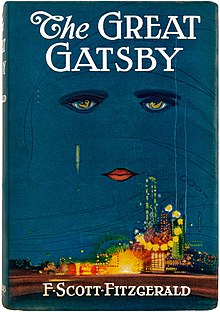
Great Gatsby Page 10
We found 158 free papers on Great Gatsby
Essay Examples
Great Gatsby Scene Rewrite
Great Gatsby
Daisy’s name It was late and the party moved from the living room to the patio and kitchen. The photographer was lying on the floor in the corner of the living room. He was a large man, standing at about 6 feet. From his appearance and the way he fell in asleep so agilely in,…
Great Gatsby: Analysis of the Narrator Nick Carraway
Great Gatsby
Jay Gatsby
In The Great Gatsby by F. Scott Fitzgerald, the narrator, Nick Carraway, plays a crucial role in delivering the story. We learn about the other characters through Nick’s perspective, keeping us unaware of any potential bias or discrimination he may have. Fitzgerald deliberately establishes Nick as a trustworthy source, as he serves as our sole…
The Great Gatsby: A Story about Hope
Great Gatsby
Wolfishly or George Wilson, in different ways ND in different situations, experience the difference between their desires and their realized experiences, between what they imagine for themselves and what their lives are really like. Hope is the only thing that helps these characters from moving forward with their aspirations and not be overcome by the…
Color Symbolism in the Great Gatsby Analysis
Great Gatsby
Symbolism
Color symbolism is often used by authors to convey deeper meanings in their writing, and this holds true for Fitzgerald’s novel, The Great Gatsby. Fitzgerald clearly incorporates a range of colors throughout his work, with yellow, white, and green being particularly prominent. However, there are additional colors like silver, blue, and red that may not…
Interpretation Of The Great Gatsby
Great Gatsby
Jay Gatsby
The Great Gatsby This Research, paper – which is a mixture of a book review and an analysis of a problem will present ideas about searching the American Dream in connection with The Great Gatsby and the main characters and how successfully they could live the American Dream according to the work of F. Scott…
The Great Gatsby/Super Notes Automatic A+
Great Gatsby
Have you ever felt that there were two of you battling for control of the person you call yourself? Have you ever felt that you weren’t quite sure which one you wanted to be in charge? All of us have at least two selves: one who wants to work hard, get good grades, and be…
American Dream in “the Great Gatsby”
Gatsby American Dream
Great Gatsby
The novel The Great Gatsby by F. Scott Fitzgerald explores the pursuit of the American dream and the extreme measures taken to attain it. The story revolves around Gatsby, who is deeply infatuated with Daisy, a married woman he had a previous relationship with. To win her love, Gatsby relies on his wealth and influence….
Perception and Views of the American Dream in Three Stories Comparison
Character Analysis
Death of a Salesman
Great Gatsby
A Comparison of Characters in Death of a Salesman,” “The Great Gatsby,” and “A Streetcar Named Desire” Three stories feature characters who possess both similarities and differences: Arthur Miller’s “Death of A Salesman,” F. Scott Fitzgerald’s “The Great Gatsby,” and Tennessee Williams’ “A Streetcar Named Desire.” The characters in question are Willy Loman (Death of…
The Theme of The American Dream in Great Gatsby
Gatsby American Dream
Great Gatsby
Jay Gatsby Is one of the pursuers of the American Dream and the mall character In the novel. For him the American Dream means: Rising from rags to riches, of amassing a great fortune that will assure a life of luxuriant ease, power, and beauty in an ideal world untroubled by care and devoted to…
Gatsby vs. Winter Dreams
Dream
Great Gatsby
Social Meaning in Fitzgerald Literature Often times fictional writing can be interpreted as commentary on the condition of humans and society. The work of F. Scott Fitzgerald is no exception to this principle. His most renowned novel, The Great Gatsby, is known for it’s demonstration of a society dictated by money, idealism, and love. Fewer…

